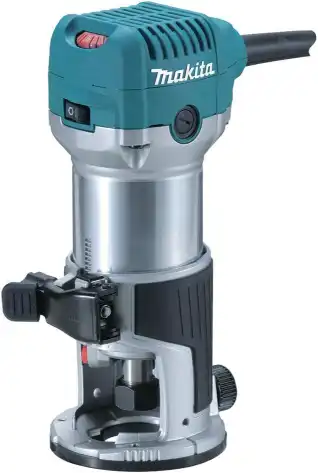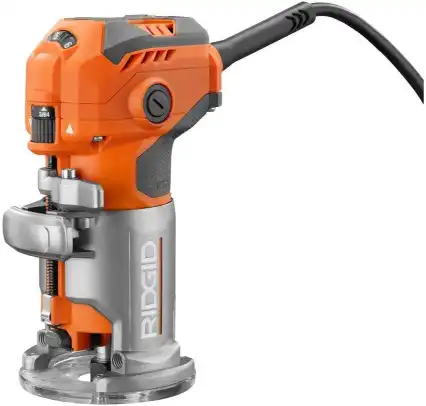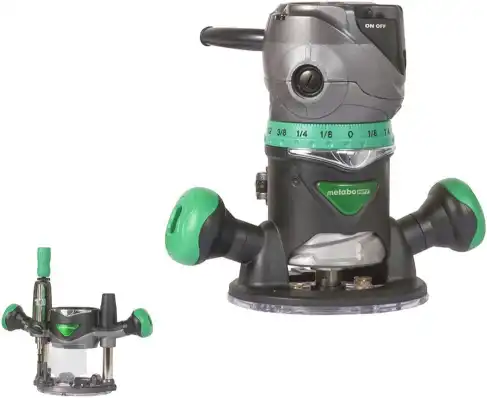Woodworking, a craft that has been practiced for centuries, has seen significant advancements in tools and techniques. Among these tools, trim routers have emerged as an indispensable asset for any woodworker. These compact yet powerful tools are essential for giving a finished look to any woodworking project, making them a must-have in every woodworker’s toolkit.
Trim routers, also known as laminate trimmers, are primarily used for trimming laminate or veneer, but their versatility extends far beyond that. They are also used for edge work, hinge mortising, making small joinery, and more. This article aims to provide a comprehensive guide on trim routers, their evolution, importance, types, key features, top brands, price range, safe usage, maintenance, and reviews.
Whether you are a professional woodworker or a DIY enthusiast, understanding trim routers will help you make the most out of your woodworking projects. So, let’s delve into the world of trim routers and explore their various aspects.
Our Top Trim Router Picks

DEWALT Router, Fixed Base, 1-1/4 HP, 7.7-Amp, Variable Speed Trigger, Corded (DWP611)
Check on AmazonKey Specs:
- Horsepower: 1.25 HP
- Amperage: 7 Amps
- Maximum Speed: 27,000 RPM
- Voltage: 127 Volts
- Weight: 5.5 lbs
The DEWALT DWP611 Router is a powerful, versatile tool designed for precision and ease. Its 1.25 HP motor ensures it can tackle tough applications with ease, while the variable speed control lets you adapt to different materials and tasks. The soft-starting motor and full-time electronic feedback maintain consistent speed for smooth, controlled cuts. With dual LEDs and a clear sub-base, visibility is excellent. The easy-to-use depth adjustment ring and quick-release base make setup and adjustments a breeze.

Makita RT0701C 1-1/4 HP Compact Router
Check on AmazonKey Specs:
- Horsepower: 1.25 HP
- Amperage: 6.5 Amps
- Maximum Speed: 30,000 RPM
- Voltage: 120 Volts
- Weight: 3.9 lbs
The Makita RT0701C Compact Router is an excellent tool for precision and comfort. Its variable speed control dial (10,000 to 30,000 RPM) allows for versatile use across various applications, while the smooth rack and pinion fine depth adjustment ensures precise settings. The slim, ergonomic design increases comfort and control during extended use, and the soft start feature provides smooth startups. With a quick-release cam lock system, depth adjustments and base removal are hassle-free, making it a highly user-friendly tool for professionals and DIYers alike.

Ridgid R2401 Laminate Trim Router
Check on AmazonKey Specs:
- Horsepower: 1.6 HP
- Maximum Speed: 30,000 RPM
- Amperage: 5.5 Amps
- Voltage: 120 Volts
- Weight: 4 lbs
The Ridgid R2401 Laminate Trim Router is a powerful and versatile tool for precise trimming and routing tasks. It features a micro-adjust dial for fine depth control, ensuring accuracy in your cuts. The flat top design allows for easy upside-down bit changes, and the no-mar top protects your work surface from damage. With a quick-release lever, removing the motor from the base is quick and easy. The variable speed and electronic feedback ensure consistent power and speed, while the built-in LED light enhances visibility in your workspace.

Metabo HPT Router Kit | Fixed/Plunge Base | Variable Speed | 11 Amp Motor | 2-1/4 Peak HP | KM12VC
Check on AmazonKey Specs:
- Motor: 11 Amps, 2.25 HP
- Speed Control: Electronic for consistent RPM
- Base Types: Fixed and Plunge
- Noise Level: 79.5 dB
- Warranty: 5 Years
The Metabo HPT Router Kit KM12VC is a powerhouse designed for precision and control. With its 11-amp motor and 2-1/4 peak horsepower, it provides consistent, reliable performance for various routing tasks. The electronic speed control maintains a steady RPM, even under varying loads, while the fine depth adjustment allows for precise depth control. Its ergonomic design ensures comfort during long sessions, and the 2-stage motor release clamp enables quick base changes. At just 79.5 dB, it’s quieter than many competing models.

BOSCH PR20EVS Colt 1.0 HP Variable-Speed Palm Router
Check on AmazonKey Specs:
- Motor: 1.0 HP, 5.6 Amps
- Speed Range: 16,000 to 35,000 RPM
- Base Type: Fixed
- Weight: 3.3 lbs
- Bit Capacity: Accepts bits up to 1-5/16 inches
The BOSCH PR20EVS Colt Palm Router is a versatile, compact tool packed with powerful features. Its 1.0 HP, 5.6 Amp motor offers a variable speed range from 16,000 to 35,000 RPM, allowing for precise speed adjustments to suit different materials and tasks. The soft-start circuitry ensures smooth startups, and the constant response circuitry maintains consistent speed under load. The ergonomic palm-grip design combined with finger support pockets provides excellent comfort and stability. The quick-clamp system makes base adjustments quick and easy, and bit changes are seamless with the easy bit-changing system.
Understanding Trim Routers
A trim router, as the name suggests, is a tool used to trim away material from wood. It is a smaller version of a standard router and is designed for lighter, more precise work. Trim routers are handheld, making them perfect for maneuvering around the workpiece with ease.
Trim routers are versatile tools that can perform a variety of tasks in woodworking. They are commonly used for flush trimming and rounding over edges, but they can also be used for cutting grooves, shaping decorative edges, and even making joints. With the right bit, a trim router can do everything a full-sized router can do, albeit on a smaller scale.
One of the main advantages of a trim router is its compact size. This makes it easier to handle and control, especially for intricate work. It also makes it a great tool for beginners who are just starting out in woodworking and want to learn the ropes without being overwhelmed by larger, more complex tools.
Evolution of Trim Routers
The history of trim routers dates back to the early 20th century when they were first introduced as laminate trimmers. These early models were primarily used for trimming laminate materials, hence the name. They were simple, handheld tools that were manually operated.
Over the years, trim routers have evolved significantly. Technological advancements have led to the development of more powerful and versatile trim routers. Today’s models come with variable speed controls, depth adjustment features, and even LED lights for better visibility. They are also more ergonomic, with comfortable grips and lightweight designs for easy handling.
Despite these advancements, the basic function of a trim router remains the same – to trim away excess material and give a finished look to the workpiece. However, the range of tasks that a trim router can perform has expanded greatly, making it a more versatile tool than ever before.
Importance of Trim Routers in Woodworking
Trim routers play a crucial role in woodworking. They are used for a variety of tasks, from simple trimming to complex shaping and joinery. The precision and control that a trim router offers make it an ideal tool for detailed work.
For example, trim routers are often used in cabinet making. They are used to trim the edge banding on plywood to give a clean, finished look. They are also used to cut the grooves for the cabinet doors and drawers. In furniture making, trim routers are used to shape decorative edges and create intricate designs.
Moreover, trim routers are not just for professionals. They are also a great tool for DIY enthusiasts and hobbyists. Whether you are building a birdhouse, making a picture frame, or crafting a wooden toy, a trim router can help you achieve a professional finish.
Types of Trim Routers
Trim routers come in different types, each designed for specific tasks. The most common types are fixed-base trim routers and plunge-base trim routers. Fixed-base routers are ideal for edge trimming and shaping, while plunge-base routers are more versatile and can be used for a wider range of tasks.
Fixed-base trim routers have a set depth that cannot be adjusted while the router is running. This makes them more stable and easier to control, especially for beginners. On the other hand, plunge-base trim routers allow you to adjust the depth of the cut while the router is running. This makes them more versatile, but also more difficult to control.
There are also combo kits available that include both a fixed base and a plunge base. These kits offer the best of both worlds, allowing you to switch between the two bases depending on the task at hand. However, they are typically more expensive than standalone models.
Key Features to Consider When Buying a Trim Router
When buying a trim router, there are several key features to consider. The first is power and speed. The power of a trim router is measured in amps, while the speed is measured in revolutions per minute (RPM). A higher amp rating means more power, while a higher RPM means faster cutting speed. However, more power and speed also mean more vibration, so it’s important to find a balance that suits your needs.
Size and weight are also important factors to consider. A smaller, lighter trim router is easier to handle and control, especially for intricate work. However, it may not be as powerful or durable as a larger, heavier model. Ease of use is another important factor. Look for a trim router with an ergonomic design, comfortable grip, and easy-to-use controls.
Durability and reliability are crucial, especially if you plan to use your trim router regularly. Look for a model with a sturdy construction and a reliable motor. Additional features like dust collection and LED lights can also be useful, but they are not essential. Ultimately, the best trim router for you depends on your specific needs and budget.
Top Trim Router Brands
There are several top brands that manufacture trim routers. These include DeWalt, Bosch, Makita, and Porter-Cable. Each brand has its strengths and weaknesses, so it’s important to do your research before making a decision.
DeWalt is known for its high-quality tools and is a popular choice among professionals. Their trim routers are powerful, durable, and come with a range of useful features. However, they are also more expensive than other brands.
Bosch is another top brand that offers a range of trim routers. Their models are well-designed, easy to use, and reasonably priced. However, they may not be as powerful or durable as DeWalt models.
Makita is known for its innovative tools and is a good choice for those looking for a versatile trim router. Their models come with a range of unique features, but they are also more expensive than other brands. Porter-Cable offers affordable trim routers that are ideal for beginners and DIY enthusiasts. However, their models may not be as powerful or durable as those from other top brands.
Price Range of Trim Routers
The price of trim routers can vary greatly depending on the brand, model, and features. Basic models can cost as little as $50, while high-end models can cost several hundred dollars. It’s important to set a budget before you start shopping and stick to it.
When comparing prices, it’s also important to consider the features and specifications of each model. A cheaper model may seem like a good deal, but it may not have the power or features you need. On the other hand, a more expensive model may have more features than you need, making it an unnecessary expense.
Remember, the best trim router for you is not necessarily the most expensive one. It’s the one that best fits your needs and budget.
How to Use a Trim Router Safely
Like any power tool, a trim router can be dangerous if not used properly. It’s important to follow safety precautions to prevent accidents. Always wear safety glasses and hearing protection when using a trim router. Make sure the workpiece is securely clamped to prevent it from moving. Never touch the bit or the workpiece while the router is running.
Using a trim router involves several steps. First, select the appropriate bit for the task and install it in the router. Adjust the depth of cut and set the speed. Then, clamp the workpiece securely and make a test cut on a scrap piece of wood. Once you are satisfied with the settings, you can start routing the workpiece.
Always move the router from left to right along the edge of the workpiece. This is known as routing “against the grain” and helps prevent the bit from digging into the wood. Apply steady pressure and move at a consistent speed to ensure a smooth, even cut.
Maintenance and Care for Trim Routers
Proper maintenance and care can prolong the life of your trim router and ensure it performs at its best. Regularly clean the router to remove dust and debris. Lubricate the moving parts as needed to keep them running smoothly. Check the bits regularly for signs of wear and replace them as needed.
Common issues with trim routers include overheating, excessive vibration, and difficulty adjusting the depth of cut. If you encounter any of these issues, refer to the user manual or contact the manufacturer for assistance. In some cases, you may need to have the router serviced by a professional.
Remember, a well-maintained trim router is not only more efficient, but also safer to use.
Reviews and Recommendations
Before buying a trim router, it’s a good idea to read reviews and get recommendations from other users. This can give you a better idea of the performance and reliability of different models. Look for reviews from users who have similar needs and requirements as you.
Based on our research and analysis, the DeWalt DWP611 is a top pick for a trim router. It offers a good balance of power, ease of use, and durability. It also comes with useful features like variable speed control and LED lights. However, it is more expensive than other models.
For a more affordable option, the Porter-Cable PCE6430 is a good choice. It is less powerful than the DeWalt model, but it is easy to use and offers good value for money. However, it may not be as durable or versatile as more expensive models.
Conclusion
In conclusion, a trim router is a versatile and essential tool for any woodworker. Whether you are a professional or a DIY enthusiast, a trim router can help you achieve a professional finish on your woodworking projects. By understanding the different types, features, and brands of trim routers, you can make an informed decision and choose the best trim router for your needs.
Remember, the best trim router is not necessarily the most expensive one. It’s the one that best fits your needs and budget. So, take your time, do your research, and choose wisely. Happy woodworking!
Lastly, always prioritize safety when using a trim router. Follow the manufacturer’s instructions and safety precautions to prevent accidents. And remember, a well-maintained trim router is not only more efficient, but also safer to use.
FAQs
What is a trim router used for?
A trim router is used for a variety of tasks in woodworking, including trimming laminate or veneer, edge work, hinge mortising, making small joinery, and more.
What is the difference between a trim router and a regular router?
A trim router is a smaller version of a regular router. It is designed for lighter, more precise work and is easier to handle and control.
How do I choose a trim router?
When choosing a trim router, consider factors like power and speed, size and weight, ease of use, durability and reliability, and additional features. Also, consider your specific needs and budget.
How do I use a trim router safely?
To use a trim router safely, always wear safety glasses and hearing protection. Make sure the workpiece is securely clamped and never touch the bit or the workpiece while the router is running. Always move the router from left to right along the edge of the workpiece.
How do I maintain a trim router?
To maintain a trim router, regularly clean the router to remove dust and debris. Lubricate the moving parts as needed and check the bits regularly for signs of wear.
